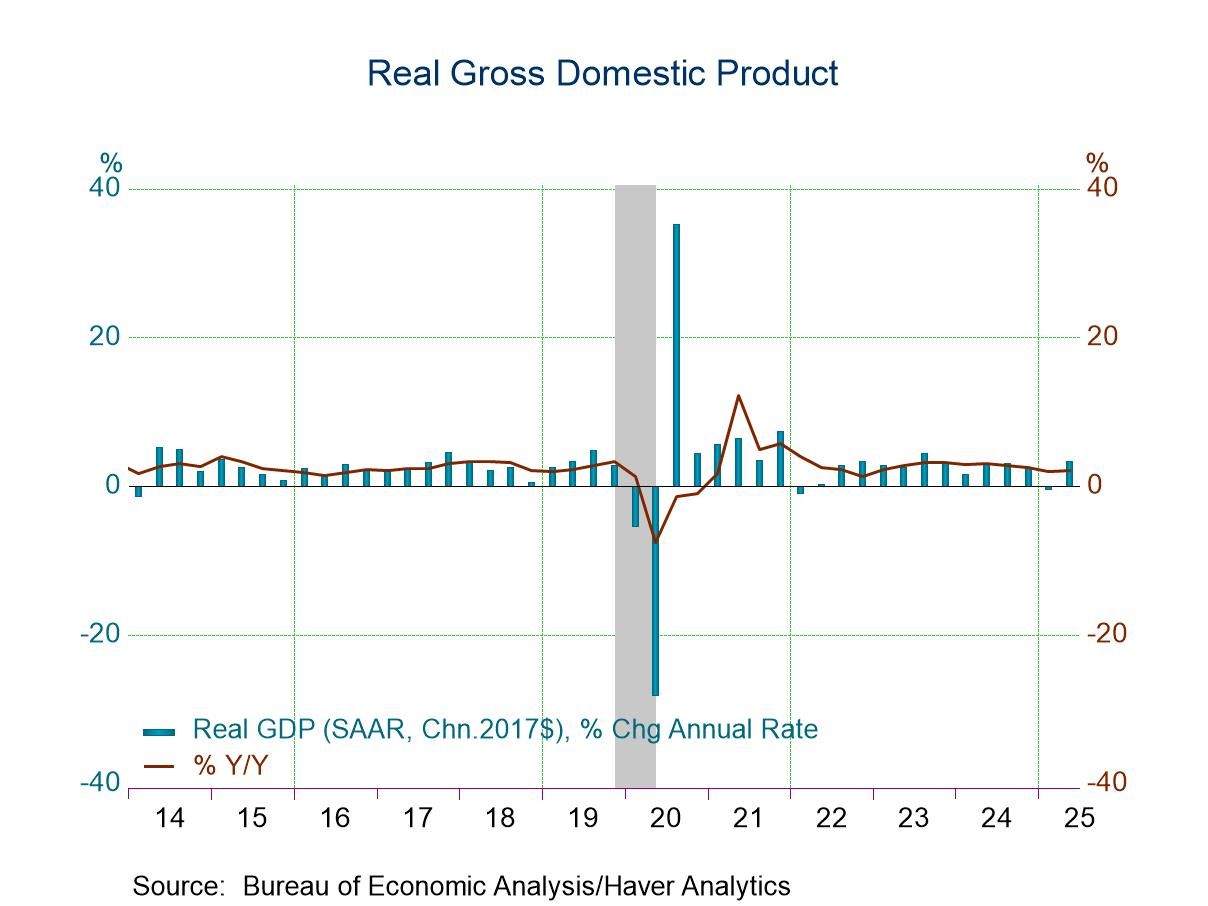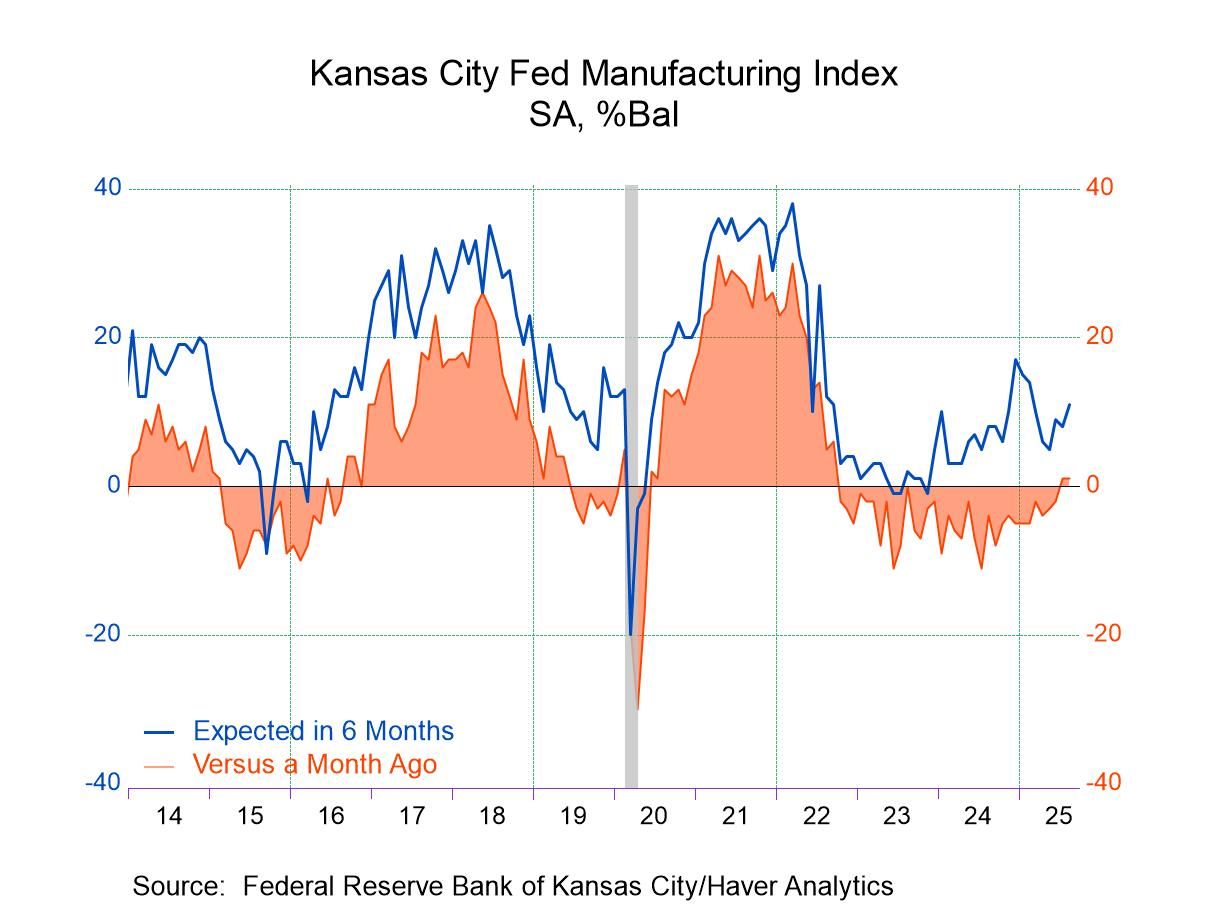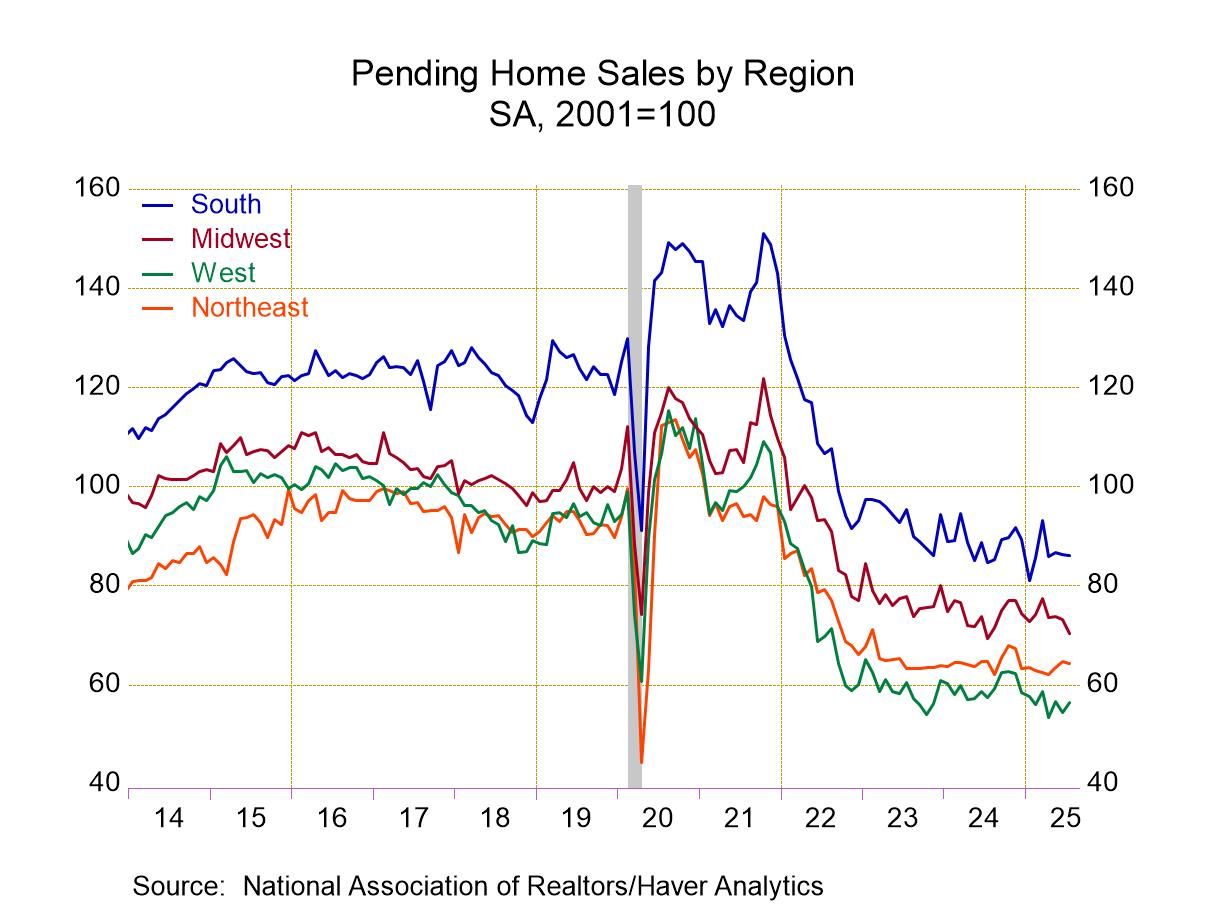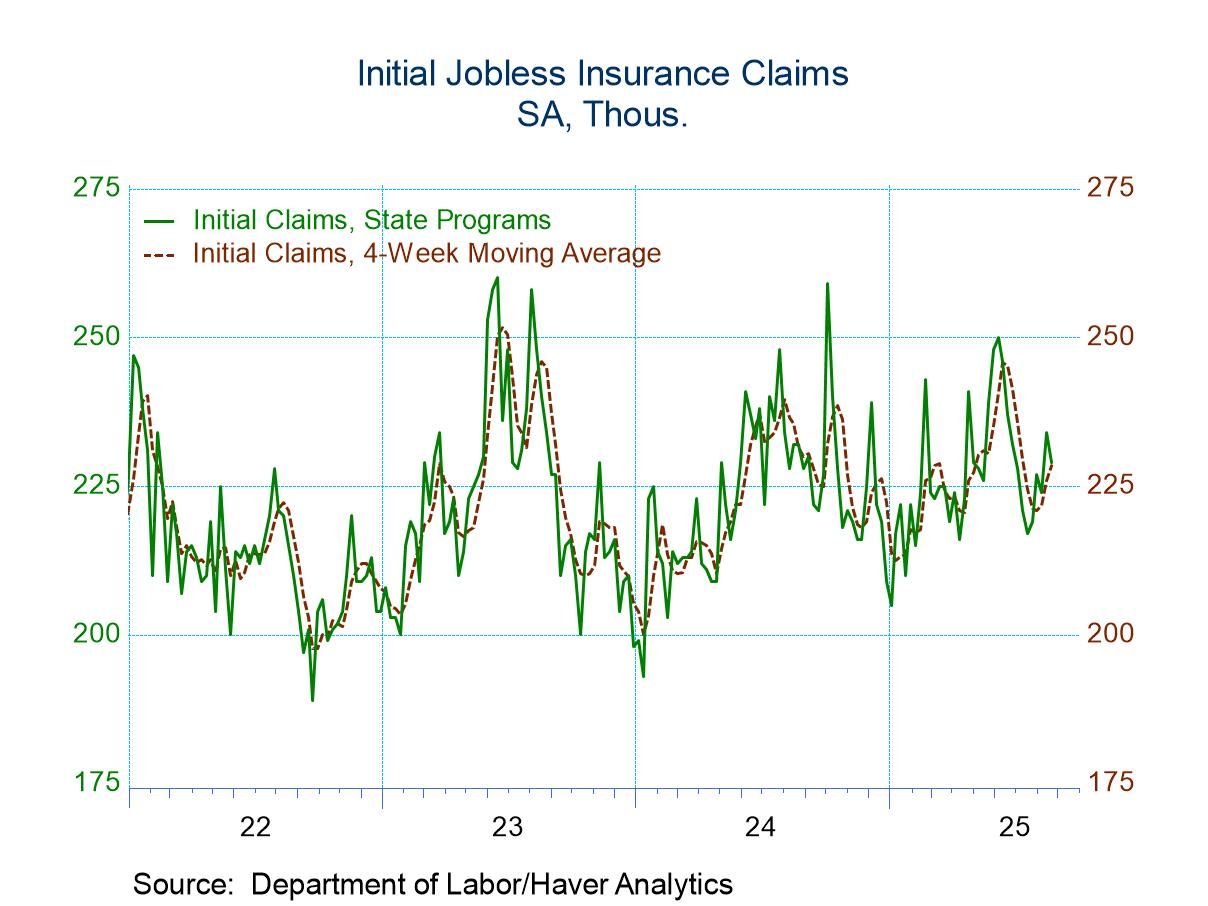 Global| Jul 12 2010
Global| Jul 12 2010UK GDP Little Changed In Revision
Summary
The revision in UK GDP left few changes on overall growth. But the trade picture is deteriorated as a sharply wider deficit was reported for Q1. Exports in Q1 are now dropping at a 6.6% annual rate and imports are up at a 6.7% pace [...]
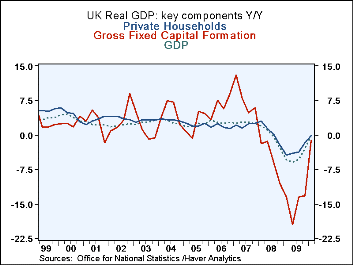 The revision in UK GDP left few changes on overall growth. But the trade picture is deteriorated as a sharply wider deficit was reported for Q1. Exports in Q1 are now dropping at a 6.6% annual rate and imports are up at a 6.7% pace putting the squeeze on trade performance. Domestic demand in the UK was up at a robust 4.8% annual rate in Q1 but that was mostly public expenditures as private consumption fell at a 0.5% annual rate. The good news was capital formation surged ahead in the quarter.
The revision in UK GDP left few changes on overall growth. But the trade picture is deteriorated as a sharply wider deficit was reported for Q1. Exports in Q1 are now dropping at a 6.6% annual rate and imports are up at a 6.7% pace putting the squeeze on trade performance. Domestic demand in the UK was up at a robust 4.8% annual rate in Q1 but that was mostly public expenditures as private consumption fell at a 0.5% annual rate. The good news was capital formation surged ahead in the quarter.
While UK GDP components are recovering the process is slow and uneven except with regard to capital formation which is snapping back on track sharply.
The UK is being helped along by the stabilization of the banking sector since that is such an importance sector to London. During Q1 banks were recovering from the financial crisis but then began to be shaken by the debt crisis in Greece and other pressures in the Zone. While banks are stabilizing they are still having a bumpy ride. As Q2 ends credit default spreads are starting to recede again.
Looking ahead the UK has adopted a fiscal program of some degree of restrictiveness and so have others in the Zone. It will be tough sledding for GDP in the quarters ahead since growth has been so dependent of the government sector. With trade performance already slipping and with fellow European economics set to implement their own restrictive polices the road to growth has just gotten a bit more treacherous.
| UK GDP and Components | ||||||||
|---|---|---|---|---|---|---|---|---|
| Consumption | Capital Formation | Domestic | ||||||
| GDP | Private | Public | Total | Housing | Exports | Imports | Demand | |
| % Change Q/Q | ||||||||
| Q1-10 | 1.3% | -0.5% | 6.2% | 19.2% | -9.1% | -6.6% | 6.7% | 4.8% |
| Q4-09 | 1.7% | 2.5% | 0.4% | -6.8% | -21.1% | 16.9% | 18.9% | 2.5% |
| Q3-09 | -1.0% | -1.1% | 2.6% | 12.3% | 7.1% | 2.8% | 5.1% | -0.3% |
| Q2-09 | -2.8% | -1.6% | -0.5% | -23.8% | -13.7% | -6.3% | -9.7% | -3.7% |
| % Change Yr/Yr | ||||||||
| Q1-10 | -0.2% | -0.2% | 2.2% | -1.2% | -9.8% | 1.3% | 4.8% | 0.8% |
| Q4-09 | -2.9% | -1.6% | 0.0% | -13.3% | -14.7% | -5.0% | -4.8% | -2.7% |
| Q3-09 | -5.3% | -3.7% | 1.4% | -13.5% | -13.6% | -12.4% | -13.7% | -5.7% |
| Q2-09 | -5.9% | -4.0% | 0.9% | -19.5% | -20.5% | -13.3% | -15.9% | -6.7% |
| 5-Yrs | 0.3% | 0.4% | 1.7% | -0.4% | -5.3% | 1.0% | 0.5% | 0.3% |
Robert Brusca
AuthorMore in Author Profile »Robert A. Brusca is Chief Economist of Fact and Opinion Economics, a consulting firm he founded in Manhattan. He has been an economist on Wall Street for over 25 years. He has visited central banking and large institutional clients in over 30 countries in his career as an economist. Mr. Brusca was a Divisional Research Chief at the Federal Reserve Bank of NY (Chief of the International Financial markets Division), a Fed Watcher at Irving Trust and Chief Economist at Nikko Securities International. He is widely quoted and appears in various media. Mr. Brusca holds an MA and Ph.D. in economics from Michigan State University and a BA in Economics from the University of Michigan. His research pursues his strong interests in non aligned policy economics as well as international economics. FAO Economics’ research targets investors to assist them in making better investment decisions in stocks, bonds and in a variety of international assets. The company does not manage money and has no conflicts in giving economic advice.



